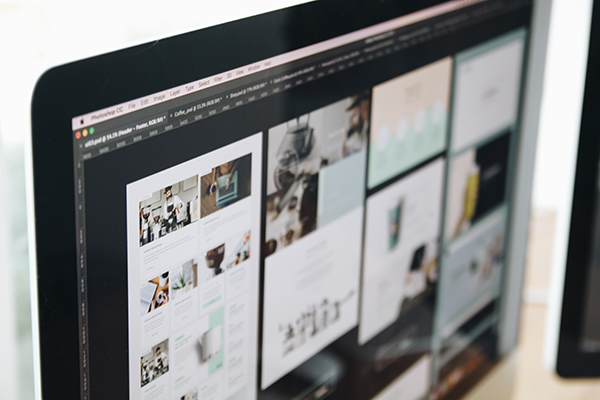Nowadays, it may not be enough to just create a great design and putting it to various websites to get recognized as a professional graphic designer. Although sharing your work to many design platforms can be helpful, you’ll still need personal branding to push you to the top of the competition.
It may have been a disregarded topic in the past, but now you can hear the word ‘branding’ from simple freelancing to Fortune 500 companies, and everything in between. It has become so popular to a point that it’s somewhat a cliché now.
That’s no surprise though. With today’s highly individualized society, it has proven to be a powerful tool that has been used by a lot of people to progress their careers to further heights.
In this article we will tackle on how you can start building up your own personal brand and use its advantages to boost your career in the design world as a beginner. Let’s get to it.
I. What Is Personal Brand?

First, let’s try to clarify what personal branding is. At the moment, its definition is not yet distinct; but as far as we’re concerned, we can define the concept of personal brand as “what others generally perceive of you as a whole”. In a way, it is an impression or trademark of you.
For example, if you’re asked to describe Apple or Google in one or two words, you may immediately think and say ‘innovative’, ‘powerful company’, etc. That’s what their brand is mostly known for to millions of people.
To relate this to you as a graphic designer, what others mostly think and say about you when they see your name or designs online is most probably your brand. It may be ‘uniquely creative’, ‘easy to work with’, ‘Photoshop expert’, etc.
II. What Can It Do For Your Career?

Now that you have a glimpse on what personal branding is, let’s talk about how it can impact, in a lot of ways, your career as a graphic designer.
First of all, personal branding can significantly improve your presence as well as credibility in the internet. This is very important especially nowadays where the competition for creative freelancers is high.
If you have your personal brand intact, you’ll come out as an authority or an expert in your field. As a result, you can potentially have more employers noticing you and, in turn, you’ll be getting more job offers to work on.
Secondly, a great personal branding can considerably grow your value. When clients or employers realize that your name is popular on your chosen craft and your works are in high quality, they will know for themselves that you don’t come in cheap. And with that, you can be confident in increasing your rates accordingly.
III. How To Build Your Personal Brand.

“Many of us are taught to do our best and then let the world decide how to judge us. I think it’s better to do your best and decide how you want to be judged. And act that way.” – Seth Godin
Keep in mind that building your personal brand is a process that takes time and a lot of effort. In other words, it’s a delayed gratification where you’ll reap the rewards after you’ve done well on your works.
Remember as well that your goal is to make people see that you’re above the rest and that you can deliver a high quality design that clients will definitely love.
Here are some ways on how you can build a great personal brand for yourself.
1. Be Yourself

Let’s start with the basic – stick with your own personality. Authenticity is one of the fundamentals of branding and you should make sure that yours has it. If you copy other successful people’s style and personality, not only would it defeat the purpose of building your own brand, it will also make you seem phony.
Dig deep inside yourself and find those attributes and qualities that are distinct from the others out there. Whatever those are, try to incorporate them to your designs.
Also, be well aware of your strengths and weaknesses so you can be better guided on what to utilize and what to minimize.
The more you know of yourself, the better your chances are in being successful with your personal brand.
2. Be Consistent

As I’ve mentioned earlier, building your brand will take time; and with that time, you should consistently deliver high quality designs that will speak for itself. Everything you do (and not do) that is seen by clients and people, in general, will reflect to your personal brand.
This may be hard sometimes especially when you’re not feeling that inspired, or when you’ve run out of ideas and nothing new comes to mind.
Not to worry, we have some tips on how to overcome the problems of creative block.
Broaden your horizon. Sometimes the problem is that we manage to get so accustomed to our ways and processes that we forget to see other options. We tend to look at things at a very limited perspective.
You can change this by spending more time browsing various design platforms such as Dribbble and Behance. Now I’m not telling you to deliberately copy others’ designs. What I’m emphasizing is to gather some great ideas that you can use as a basis or foundation and then work your way from there.
Interact. (related to no. 1) Talking to other designers in a design community can also be a big help in gaining some valuable ideas that you can use for your design. You’ll be amazed on how many things you can learn for other fellow designers.
Plus, it can also be a good stress-reliever when you can talk to someone who is also experiencing the same thing you do.
Take a breath. In other times, the issue is more on the emotional side, maybe you’re crammed with a lot of work, maybe the deadline is coming up and you’re still not ready to give your proposal/revisions, or maybe you have a personal problem that hinders you to focus on your work – these things can make you start worrying that you can’t accomplish your tasks on time and drastically increase your stress levels.
If this is the case, then it would be beneficial for you to step back, take a deep breath, and do something that can help you relax or calm down (short walks on the park, taking a nap, meditation). This may be counter-intuitive especially when you’re already short on time, but this is essential for you to do things efficiently with a sound mind.
To be consistent on your work, you should keep on improving your skills and work ethics in order to deliver your task every single time.
For more tips, you can go to this article about creative blocks you should overcome.
3. Be More Visible

For you to be recognized, you should also be very visible online. Here are a few ways to get yourself more visible online.
Portfolios. This is a great tool you can use to showcase yourself and your best works. Your portfolio will be the one to tell your potential clients who you are and what you can do for them. This is also an avenue to communicate with your potential clients. With that, you have to make sure your portfolio is properly optimized and has a fresh content as much as possible. (Be picky on what designs you will showcase on your portfolio. Treat them as if they are diplomas and certificates that are placed in a doctor’s or lawyer’s office. They will enforce your expertise on your field to others and hence, add value and ‘wow’ factor to your brand.)
Blog. Once you’ve started creating your blog, see to it that it has interesting and high quality contents that other designers can enjoy reading. It can also be helpful if you give away some high quality design freebies and let the word spread through social media and other design community sites. On the other hand, you can also write guest posts on other design blogs so you can tap their readers as well.
Social Media. Maintaining a social media presence is one of the best things you can do right now. With millions of people using them, you can tap a vast number of people – among them are potential clients.
Design Communities. Joining design community websites and interacting with other designers can also help you grow your network and influence on the community. Once you sign up, always aim to build rapport with others. Moreover, add some value to your name by making yourself a resource to that community. Provide help and solution to other designers’ problems and you’ll be on a fast track in becoming an authority.
Collaborations. This strategy is beneficial in a lot of ways. For one thing, you can build and strengthen a relationship with other designers, and for another thing, you can gain valuable ideas and experience that you can add to your career stash.
4. Seek Feedback And Refine

What matters most when it comes to your brand is how others perceive it. So it’s critical to be aware of the value of your brand. You can attain this by getting feedback from your previous and current clients, reliable friends, readers, and other designers as well.
As soon as you get a sufficient amount of feedback, go ahead and refine your brand accordingly. Use feedback as a compass to guide you on what areas you need to improve on.
Your personal brand will change as you advance in your career, so be sure to check back from time to time to make sure that you’re on the right track.
IV. Conclusion
When your brand is effectively propagated, it sends a strong impression to potential clients and employers that you’re a prime candidate for a design project. If you have achieved this level of branding, it is the time when this saying will be a solid truth – “Your work will speak for itself.”
Hope you’ve got some useful information in this post on starting your own personal branding. Did we miss something? Do you have more advice that we have not yet mentioned? Please share to us your thoughts on the comment section. Thank you and have a great day!







